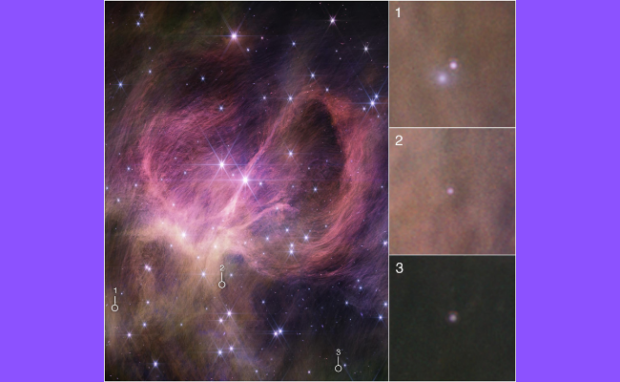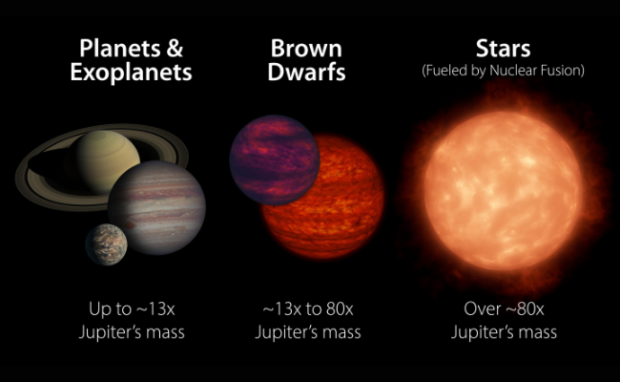NASA discovers the smallest star-like object in space
NASA’s James Webb Space Telescope recently smashed records after finding the smallest star-like object in space. It is a brown dwarf from the Star Cluster IC438. Scientists lack enough information about these heavenly bodies to properly classify them. However, the recent discovery could provide further insights.
We’ve been learning more about outer space for millennia but still have much to discover. Specifically, we still haven’t confirmed how lesser-known heavenly bodies like brown dwarfs form. Also, experts haven’t determined how small such things could be in outer space. The latest discovery could help us get answers for both.
This article will elaborate on the smallest star-like object the JWST found. Later, I will share more of NASA’s recent discoveries, such as a Christmas Tree cluster!
How did NASA discover the smallest star-like object?

NASA stumbled upon this unique brown dwarf when it tried to find the smallest object that could form like a star. Catarina Alves de Oliveira, the head of the Science Operations Development Division at the European Space Agency, looked for answers in the star cluster IC 348.
It is roughly 1,000 light-years away in the Perseus star-forming region. IC 348 is also about five million years old, so its brown dwarfs are likely still glowing in infrared light.
The ESA expert and her team found the smallest one, only a few times Jupiter’s mass. They captured an image using the JWST’s Near-Infrared Camera (NIRCam). The researchers also followed up on the most promising targets using the (Near-Infrared Spectrograph) micro shutter array.
Why is the brown dwarf important?

Business Insider explains brown dwarfs are one of the most unusual objects in the universe. Most objects we see in outer space are in the form of planets, nebulas, stars, or black holes.
However, brown dwarfs don’t fit into these categories. They’re not large enough to qualify as a star. On the other hand, they’re not big enough to count as planets.
You may also like: China will launch first-ever ‘lobster eye’ telescope
The closest description is star-like; scientists typically call them “failed stars.” However, brown dwarfs are large enough to generate the right conditions to fuse with deuterium.
That is how they generate heat and light that James Webb and other telescopes can detect. Eventually, they exhaust their deuterium reserves, making them harder to detect.
Kevin Luhman, an astronomy professor at Pennsylvania State University, told Business Insider, “Since brown dwarfs lack hydrogen fusion, they are relatively cool and glow brightest at infrared wavelengths. As a result, an infrared telescope like JWST is the best option for trying to detect new brown dwarfs.”
Other space discoveries
A CHRISTMAS TREE IN SPACE 🎄LOOK: Discovered about 2,500 light-years from Earth, the Christmas Tree Cluster is a bundle of young stars, most about 1 to 5 million years old. | 📷:NASA pic.twitter.com/4elHUHBYBT
— Inquirer (@inquirerdotnet) December 24, 2023
NASA also found an interestingly-shaped star cluster called the NGC 2264 or the “Christmas Tree Cluster.” It is a cluster of stars in the Milky Way galaxy aged roughly one and five million years old.
Its stars are smaller and larger than the Sun; some are a tenth of the Sun’s mass, and others exceed it sevenfold. The star cluster looks like holiday vegetation because of its color and rotation.
Its blue and white lights are young stars that emit X-rays detected by NASA’s Chandra X-ray Observatory. Optical data from the National Science Foundation’s WIYN 0.9-meter telescope on Kitt Peak shows green nebula gas, which looks like the “pine needles” of a Christmas tree.
The Two Micron All Sky Survey infrared data shows foreground and background stars in white. NASA rotated the image roughly 160° from the astronomer’s standard of North, pointing upward. As a result, the tree’s top is toward the image’s top.
You may also like: NASA discovers question mark in space
The space agency also released an animated version that depicts the stars blinking simultaneously. It only added the visual effect for emphasis because stars emit X-rays in different intervals.
NASA says there are many reasons for these variations. Some lights come from magnetic fields, such as solar flares. Others are from the hot spots and dark areas that go in and out of view as stars rotate.
The flickering lights may also come from the changing gas thickness obscuring stars. Moreover, some materials are still falling onto the stars, making them shimmer from a distance.
Conclusion
The James Webb Space Telescope discovered the smallest star-like object ever recorded. It is a brown dwarf found in the IC 348 star cluster.
It leaves many mysteries for scientists, such as how it formed with a mass equivalent to a giant planet without becoming a planet. Also, they are wondering whether they could find an even smaller interstellar object.
Learn more about the smallest brown dwarf discovered by reading its Astronomical Journal webpage. Moreover, check out the latest digital tips and trends at Inquirer Tech.